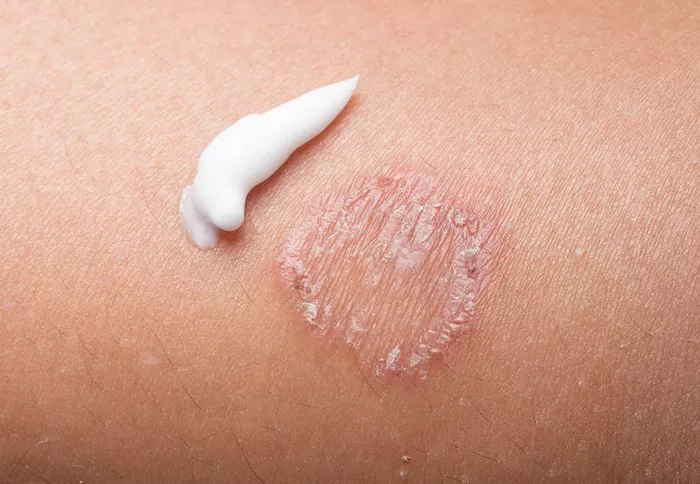Yes, it does! Covering ringworm is a crucial step in containing the fungal infection and reducing the risk of spreading it to other parts of the body or to other individuals. By covering the affected area, we create a barrier that limits the contact between the fungal spores and the environment, thereby minimizing the chances of transmission.
Explanation:
Ringworm, despite its misleading name, is not caused by a worm but rather by a fungus known as dermatophyte. This fungus thrives in warm, moist environments and can easily spread through direct skin-to-skin contact or by coming into contact with contaminated objects or surfaces.
Covering ringworm serves as a physical barrier that prevents the fungal spores from spreading to other areas of the body or to other people. It helps contain the infection within the affected area, allowing the antifungal treatment to work effectively without the risk of further transmission.
Different Covering Methods:
When it comes to covering ringworm, there are various options available, including bandages, gauze, and clothing. The choice of covering depends on several factors, including the location and size of the ringworm, the patient’s age, and their activity level.
For smaller ringworm lesions, adhesive bandages or gauze pads can be used to cover the affected area. These provide a snug fit and help keep the antifungal medication in place while preventing the spread of fungal spores.
In cases where the ringworm lesion is larger or located in a more sensitive area, such as the groin or armpits, wearing loose-fitting clothing made of breathable fabrics like cotton can help provide coverage without causing irritation or discomfort.
Choosing the Right Covering:
When choosing a covering for ringworm, it’s essential to consider the following factors:
1. Location and Size: The location and size of the ringworm lesion will determine the type of covering needed. For larger lesions or those in areas prone to friction, such as the hands or feet, a more substantial covering may be required to ensure adequate protection.
2. Patient’s Age: For young children or infants, it’s essential to choose coverings that are gentle on the skin and easy to apply and remove to avoid causing further irritation or discomfort.
3. Activity Level: Patients who are active or engage in physical activities may require more durable coverings that can withstand movement and sweat without coming loose.
Additional Prevention Measures:
While covering ringworm is an effective way to prevent its spread, additional measures can further reduce the risk of transmission:
1. Hygiene Practices: Good hygiene practices, such as washing hands frequently with soap and water, can help prevent the spread of ringworm. Encourage patients to keep the infected area clean and dry to create an environment that is less hospitable to fungal growth.
2. Avoiding Scratching: It’s crucial to avoid scratching the ringworm lesion as this can spread the fungal spores to other parts of the body or to other people. Emphasize the importance of using gentle cleansing methods to alleviate itching without causing further irritation.
3. Disinfecting Belongings: Personal items like clothing, towels, and bedding should be regularly washed and disinfected to prevent re-infection and transmission. Use hot water and detergent to launder clothing and linens, and consider using antifungal sprays or wipes to disinfect surfaces that may come into contact with the fungus.
Treatment Options:
In addition to covering ringworm and practicing good hygiene, there are various treatment options available to help manage the infection:
1. Over-the-counter Antifungal Medications: Over-the-counter antifungal creams or ointments containing ingredients like clotrimazole or miconazole can be applied directly to the ringworm lesion to help clear the infection. These medications are typically applied two to three times daily for several weeks until the infection resolves.
2. Seeking Medical Advice: If the ringworm is severe, widespread, or doesn’t improve with self-care measures, it’s essential to seek medical advice from a doctor or dermatologist. They can prescribe stronger antifungal medications or recommend additional treatments, such as oral antifungal medications or medicated shampoos for scalp ringworm.
Conclusion
In conclusion, covering ringworm is an essential step in preventing its spread and managing the infection effectively. By creating a barrier that limits the transmission of fungal spores, we can contain the infection and promote faster healing. Combined with good hygiene practices and appropriate treatment, covering ringworm can help patients recover from this common fungal infection with minimal risk of transmission to others.
Related Topics:
Does Ringworm Burn When Treated



























